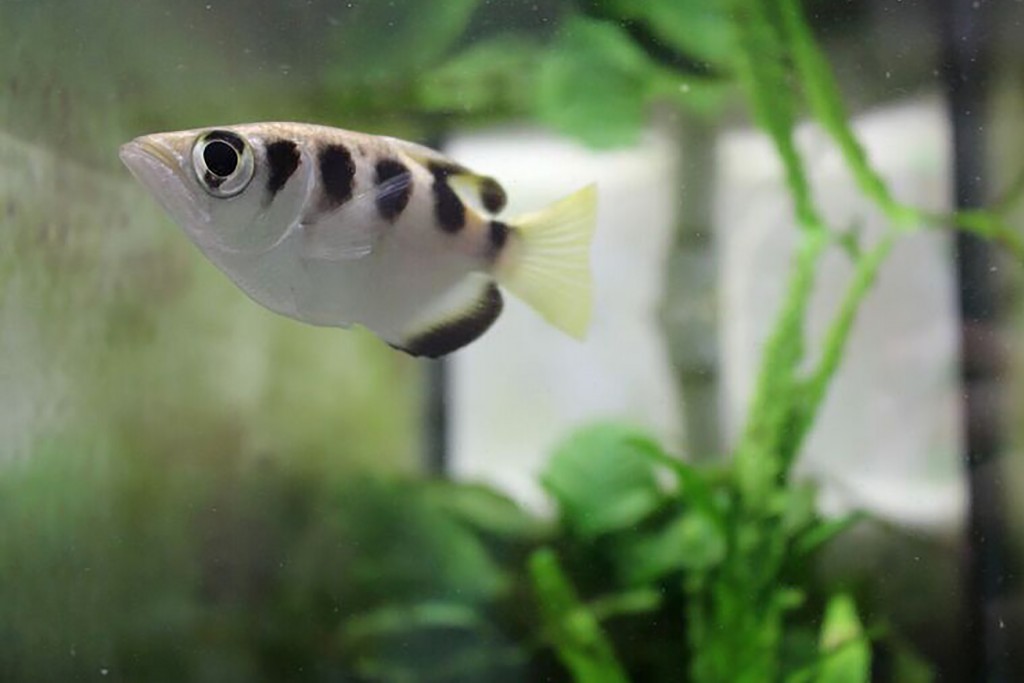
Fish can tell one human face from another despite lacking a part of the brain that mammals and birds use for this task, scientists said on June 7, 2016. This long-hidden ability was demonstrated in experiments with archerfish — a tropical species best known for spitting jets of water to shoot insect prey out of the air./ AFP PHOTO /
by Mariëtte Le Roux
PARIS, France (AFP) — A tropical fish can tell one human face from another despite lacking a brain section that homo sapiens and other “smart” animals use for this task, scientists said Tuesday.
The astonishing ability was demonstrated in experiments with eight archerfish, a tropical species best known for spitting pressurised water jets to shoot prey out of the air.
Instead of aiming at bugs, the sharpshooting fish were taught to spit at pictures of human faces displayed on a computer monitor suspended over their aquarium.
“We were pleasantly surprised at the speed at which the fish learnt as well as their high degree of accuracy,” said study co-author Cait Newport of the Oxford University’s department of zoology.
The fish, which require excellent vision for hunting, were first introduced to two faces, and conditioned to spit at one of them in exchange for a food reward.
The researchers then tested whether the fish would recognise, and spit at, the familiar face among 44 new ones.
The fish got it right more than 80 percent of the time.
“Even when we did this with faces that were potentially more difficult because they were in black and white and the head shape was standardised, the fish were still capable of finding the face they were trained to recognise,” said Newport.
“I think the general public would be surprised at how smart fish are and the sorts of behaviours they display,” she told AFP.
Not all the fish were equally fast learners — some needed only one training session, others up to 17.
Fishy feat
Distinguishing between human faces is a surprisingly difficult task.
The standard face has two eyes above a nose and mouth, and it was thought that a high form of intelligence was needed to read the subtler differences.
“It has been hypothesised that this task is so difficult that it can only be accomplished by primates, which have a large and complex brain,” said Newport.
But the archerfish were able to do this despite not having a neocortex, the most recently evolved part of the human brain, governing sensory perception and language.
Birds are likewise able to recognise human faces, and it was recently discovered that they have neocortex-like structures.
“Fish have a simpler brain than humans and entirely lack the section of the brain that humans use for recognising faces,” Newport said.
“It has been suggested that their simple brains may limit their intelligence. However, there is increasing research showing that fish are capable of doing a lot more than previously thought.”
It was possible that other species of fish had a similar ability, said Newport, though this was not part of the study.
Understanding fish intelligence might help shed light on our own brain function — whether facial recognition, for example, is an innate or learned ability.
The findings suggest “that the discrimination of individuals based on facial features is not unique to humans,” wrote the researchers, “and perhaps human faces themselves are not a particularly special class of objects.”
The study was published in the journal Scientific Reports
mlr/hmw
© 1994-2016 Agence France-Presse







